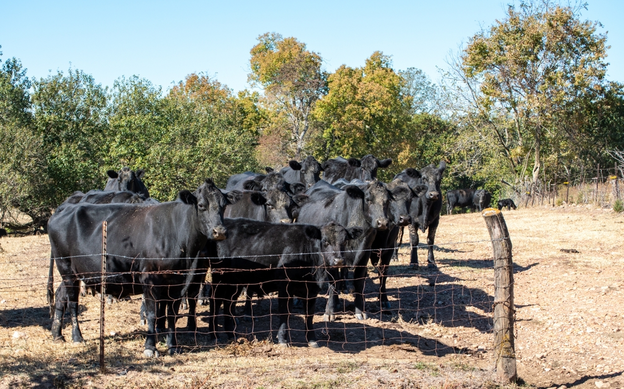The United States boasts a rich diversity of beef cattle breeds, each with unique characteristics that make them more suitable for different regions and production goals.
This guide explores the most popular breeds, including Angus, Hereford, Charolais, Simmental, and Brahman, exploring their traits, adaptability, and best management practices. Additionally, we discuss how HerdX®’s advanced herd management technology, HerdView® App, can be an invaluable tool for ranchers aiming to optimize their operations.
Jump Links
- Introduction
- The Importance of Beef Cattle Breeds in the US
- Overview of the Most Popular Beef Cattle Breeds in the US
- Land Use and Management Practices
- Feed Efficiency and Growth Rate
- Incorporating Technology for Breed Selection and Management
- Conclusion
- FAQs
Introduction
In the world of cattle ranching, few decisions are as impactful as the selection of the right breed. Each breed has distinct characteristics, including size, growth rate, temperament, and adaptability to environmental conditions. Furthermore, these characteristics directly influence meat quality, affecting market demand and profitability.
As an industry leader, HerdX® is committed to empowering cattle ranchers and feedlot operators with the best tools and technology. Our HerdView® App and HerdView® App Insights data studio are designed to offer comprehensive support, from tracking individual animals to providing critical analytics for operational optimization.
As you navigate the vast world of beef cattle production, understanding the diversity of cattle breeds used in the US is paramount. The breed of cattle significantly affects the quality of meat, milk production, and overall profitability of your operation. With the United States being a top beef producer globally, selecting the right breed is critical for competitiveness and sustainability.
This guide will examine the different types of beef cattle breeds prevalent in the US. By understanding the unique attributes of each breed, ranchers can make informed decisions that align with their production goals, environmental conditions, and market demands. Whether you are a seasoned rancher or just starting, this guide provides the insights needed to elevate your cattle ranching endeavors.
The Importance of Beef Cattle Breeds in the US
The United States is a juggernaut in the global beef industry, and the selection of cattle breeds plays a significant role in maintaining this position. Selecting the right breed is not just about the quantity of meat; it encompasses various aspects that contribute to the efficiency, sustainability, and profitability of cattle ranching. Here, we break down why beef cattle breeds are integral to the industry in the US.
Optimizing Productivity
Each breed has unique growth rates, feed conversion ratios, and meat yield. Ranchers can optimize productivity by selecting a breed that excels in these aspects. For instance, Charolais cattle are renowned for their rapid growth and muscular build, making them an excellent choice for ranchers focused on meat production.
Meeting Market Demand for Meat Quality
Consumer preferences for beef vary; some markets are willing to pay premiums for specific meat qualities such as marbling, tenderness, or flavor. Angus cattle, for example, are renowned for their marbling, which contributes to the flavor and tenderness of the beef. Breeds naturally possessing these qualities are vital in meeting market demands and can command higher prices.
Adaptability to Environmental Conditions
The United States is a geographically diverse nation with varying climate conditions. Some cattle breeds are better suited for specific environments. Brahman cattle, for example, are well adapted to hot climates and resistant to diseases prevalent in warmer areas. Hereford cattle, on the other hand, are known for their hardiness in cooler climates. Selecting breeds well-suited to the local environment can reduce healthcare costs and improve herd health.
Sustainability and Environmental Impact
Sustainable ranching practices are becoming increasingly important, and the choice of the breed can play a role in this. Some breeds, like the Brahman, can thrive on lower-quality forage, benefiting regions where overgrazing is a concern. On the other hand, rotational grazing strategies can be more effective with breeds like Angus, which require higher-quality pasture.
Genetic Diversity and Crossbreeding
Having a diverse array of cattle breeds allows for genetic diversity, which is critical for the health and resilience of herds. Moreover, crossbreeding can combine desirable traits from different breeds, such as growth rate, meat quality, and disease resistance. This practice can result in hybrid vigor, where crossbred animals perform better than the average of the parent breeds.
Overview of the Most Popular Beef Cattle Breeds in the US
The US has various popular beef cattle breeds, each with unique characteristics and advantages. This section overviews some of the most widely recognized breeds, including Angus, Hereford, Charolais, Simmental, and Brahman. Understanding these breeds’ key traits and suitability can aid ranchers in making informed decisions that align with their goals and environmental conditions.
Angus

Arguably the most popular beef cattle breed in the US, Angus cattle are renowned for their high-quality meat, featuring excellent marbling. They are hardy, adaptable to various climates, and have a naturally docile temperament.
Hereford
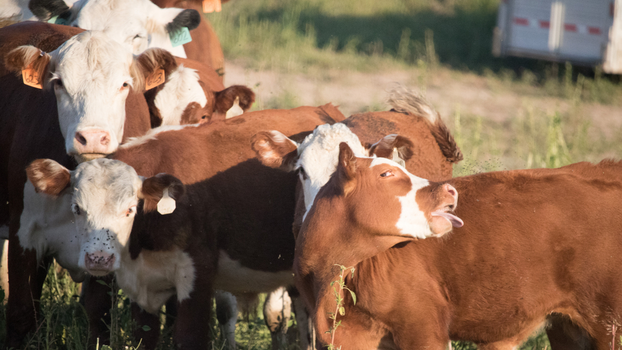
Herefords are cherished for their ability to thrive in harsh climates and disease resistance. They are also famous for their high fertility rates and good-natured temperament, making them an excellent choice for ranchers looking for less problematic herds.
Charolais
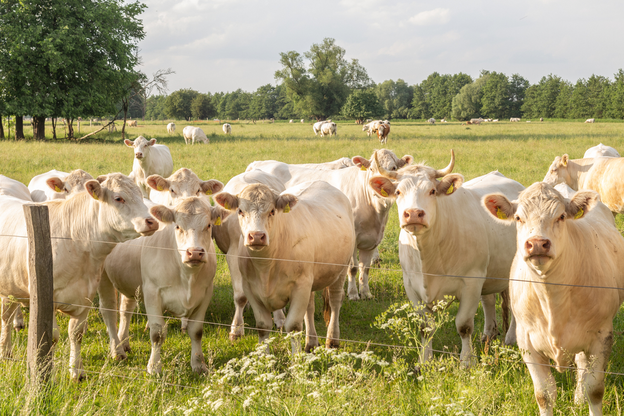
Originating from France, Charolais cattle are known for their impressive size and rapid growth rate. They produce lean, well-muscled beef and are often used in crossbreeding programs to improve meat yield.
Simmental
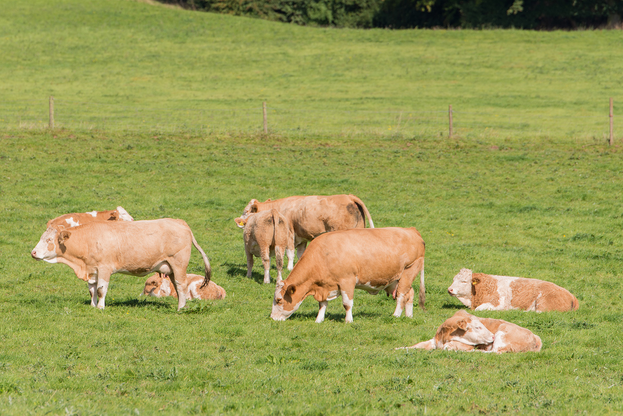
Simmental cattle are one of the oldest and most widely distributed breeds globally. They are favored for their versatility, producing high-quality beef and milk. These cattle are also recognized for their above-average growth rate and exceptional feed conversion.
Brahman
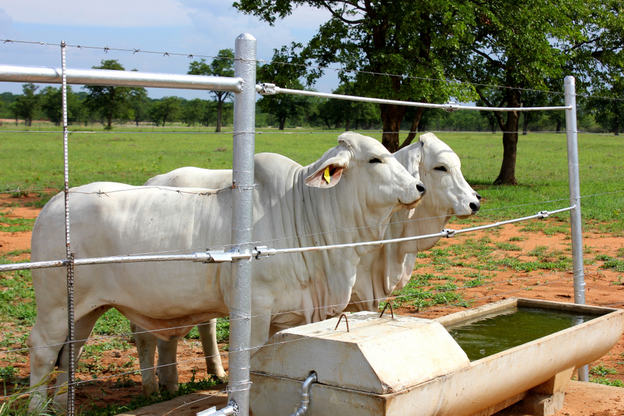
Brahman cattle are adapted to thrive in hot climates and are widely used in the southern regions of the US. They exhibit superior disease and insect resistance, making them ideal for areas with harsh conditions.
Understanding these beef cattle breeds’ unique characteristics helps ranchers make informed decisions about the best breeds to raise, given their specific environmental conditions and market targets. As we progress, we’ll delve into further details on how to best manage and profit from your chosen breed.
Stay tuned for the next segment, where we will explore the environmental impacts of beef cattle production in the US.
Land Use and Management Practices
Understanding how the breed of cattle affects land use and management is vital. Different breeds have varying grazing habits and feed requirements, impacting the land’s sustainability and productivity.
Brahman and Land Use
Brahman cattle, known for their ability to thrive in hot climates, are often preferred in regions with sparse pastures. They excel as foragers, maintaining conditions even on less nutritious grass. Due to these qualities, they are an ideal choice for ranchers in the southern US, where pasture quality can vary.
Angus and Pasture Management
On the other hand, Angus cattle require a more nutritious diet to produce the highly marbled beef they are known for. Managing pastures to ensure high-quality forage is available is important when raising Angus. Integrating rotational grazing and sustainable pasture management practices can lead to improved productivity.
Feed Efficiency and Growth Rate
Feed efficiency and growth rate play a significant role in the profitability of a beef cattle operation. Charolais and Simmental breeds, known for their rapid growth rates, require an optimized feeding program to reach their full potential.
Charolais Feeding Program
Charolais cattle benefit from a high-energy diet that supports their muscular development. Investing in quality feeds and ensuring proper ration formulation will yield dividends in the form of lean, well-muscled beef.
Simmental’s Dual Purpose
Balancing their diet to support milk and meat production is critical for Simmental cattle. Their versatility as a dual-purpose breed can be maximized by providing a diet that promotes lactation without compromising muscle growth.
Incorporating Technology for Breed Selection and Management
HerdX® offers HerdView® App, a cutting-edge herd management tool that helps ranchers make informed breed selection and management decisions. With HerdView® App, you can:
- Track individual animal performance and health history
Additionally, the HerdView® App Insights data studio allows for easy visualization of key performance indicators, helping ranchers to make data-driven decisions that optimize productivity and profitability.
Conclusion
In conclusion, the selection of beef cattle breeds is of utmost importance in the US beef industry.
By understanding each breed’s unique traits, adaptability, and market demands, ranchers can make informed decisions that align with their production goals and environmental conditions.
Optimizing productivity is a crucial aspect of cattle ranching, and different breeds offer varying growth rates, feed conversion ratios, and meat yields. Choosing a breed that excels in these areas can significantly enhance productivity and profitability.
Meeting market demand for meat quality is another essential consideration. Consumer preferences for marbling, tenderness, and flavor vary, and certain breeds like Angus have established reputations for meeting these requirements. Breeds that naturally possess these qualities can command higher prices in the market.
The adaptability of cattle breeds to environmental conditions is crucial for sustainable ranching practices. The US encompasses diverse climates, and selecting breeds that thrive in specific environments can lead to better herd health, reduced healthcare costs, and improved sustainability. Whether Brahman cattle excel in hot climates or Hereford cattle, thrive in cooler regions, breed selection plays a vital role in environmental adaptation.
Genetic diversity is also essential for the health and resilience of cattle herds. By having a diverse array of cattle breeds, ranchers can maintain genetic diversity within their herds, which helps guard against the risks of inbreeding and improves overall herd vitality. Additionally, crossbreeding strategies can combine desirable traits from different breeds, resulting in hybrid vigor and further enhancing productivity and adaptability.
HerdX® understands the significance of breed selection and offers advanced herd management technology through our HerdView® App and HerdView® App Insights data studio. These tools provide ranchers with comprehensive support, enabling them to track individual animal performance and make data-driven decisions to optimize productivity and profitability.
In the ever-evolving landscape of the beef industry, the careful selection of beef cattle breeds sets the foundation for success. By leveraging the knowledge and technological tools available, ranchers can navigate the complexities of breed selection and management, ensuring their operations thrive while meeting market demands and promoting sustainability.
Beef Cattle Breeds FAQs
What breed of cattle is best for beef production in a hot climate?
Brahman cattle are well-suited for hot climates due to their heat tolerance and resistance to diseases common in warmer areas.
How can HerdView® App help select the right breed for my operation?
HerdView® App can provide insights into the productivity, and health of different breeds in your specific environment, helping you to make an informed decision on breed selection.
Can I crossbreed different cattle breeds to improve productivity?
Crossbreeding can be a beneficial strategy to combine the favorable traits of two or more breeds, such as growth rate, meat quality, and adaptability.
How does the breed choice affect my operation’s environmental sustainability?
Different breeds have varying grazing habits and feed requirements, impacting land use and sustainability. Selecting a breed well-suited to your environment can lead to more sustainable grazing practices and reduced environmental impact.
What factors should I consider when selecting a beef cattle breed for my operation?
When selecting a beef cattle breed for your operation, several factors should be considered:
- Climate and environmental conditions: Choose a breed well-suited to your region’s climate and environmental conditions to ensure adaptability and minimize health risks.
- Market demands: Research the preferences of your target market and select a breed that aligns with their meat quality and characteristics preferences.
- Production goals: Determine your goals, whether focusing on meat yield, milk production, or both. Select a breed that aligns with your specific production objectives.
- Management requirements: Assess your capabilities and consider different breeds’ temperament, handling ease, and labor requirements.
- Available resources: Evaluate the availability and cost of feed, grazing land, and other resources required for the chosen breed.
Considering these factors will help you make an informed decision when selecting the most suitable beef cattle breed for your operation.

